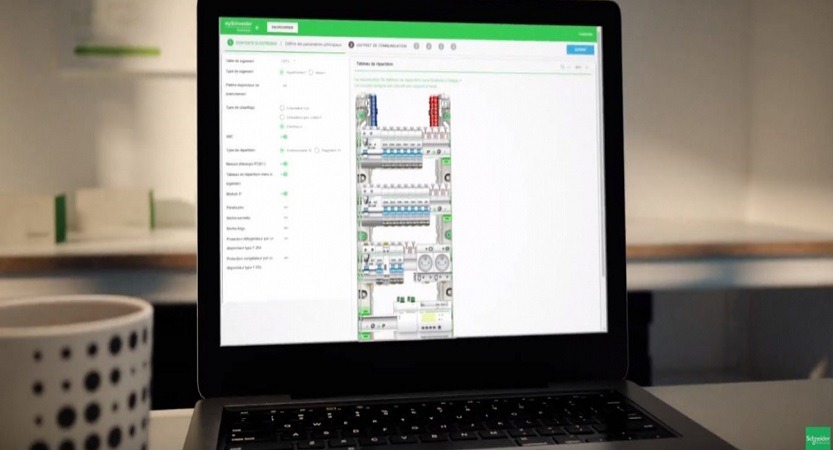Introduction
In modern electrical installations, electronic equipment is becoming increasingly sensitive and vulnerable. An unexpected voltage spike —known as a transient overvoltage— can cause serious failures, damage, or even the total loss of a device. For this reason, having a Surge Protection Device (SPD) is a smart and preventive measure. In this guide, I explain what they are, why they are important, how to choose them, install them, and maintain them properly.
What Is a Transient Overvoltage?
A transient overvoltage is a very brief increase in voltage (lasting microseconds to milliseconds) that can reach values far above the normal level of the electrical grid.
These transient surges can originate from:
A lightning strike near or on the installation
Switching operations in the electrical network (such as connecting or disconnecting large loads)
Failures or disturbances in the public grid
Without protection, these spikes can damage equipment, cause interruptions, or even lead to more severe risks.
What Is an SPD and How Does It Work?
An SPD —also known as a transient surge arrester— acts as the “lifesaver” of an electrical installation. When a voltage spike appears, the SPD detects it and diverts the excess energy to ground or limits it, preventing it from reaching the protected equipment.
In simple terms: under normal conditions it remains inactive; but when the voltage rises dangerously, the SPD reacts in milliseconds to protect connected devices.
Benefits of Installing an SPD
Protection for sensitive equipment (computers, machinery, smart home systems, etc.)
Avoid costly repairs and extend equipment lifespan
Improve safety, as surges can create heat or electrical arcs
Meet regulatory requirements —in many countries SPD installation is mandatory or highly recommended in new buildings or renovations
How to Choose the Right SPD: Key Criteria
To ensure real protection, it’s essential to select the right SPD. These are the most important parameters:
SPD Type or Class
According to standards such as IEC 61643-11, SPDs are classified into types (Type 1, Type 2, Type 3) depending on where they should be installed and what risks they cover:
Type 1: Designed for main service panels; capable of handling high-energy surges such as direct lightning strikes
Type 2: For distribution boards, where surges are less severe but still significant
Type 3: For point-of-use protection, installed close to the equipment that needs protection
Discharge Capacity (In and Imax)
In: Nominal discharge current the SPD can repeatedly handle
Imax: Maximum current it can withstand in a single surge event
Higher capacity means greater protection margin.
Residual Protection Level (Up)
This value indicates how much voltage still reaches the equipment after the SPD activates. The lower the Up, the better the protection.
Maximum Continuous Operating Voltage (Uc)
The maximum voltage the SPD can withstand under normal operating conditions without triggering. It must match your electrical system.
Other Factors
Certifications: Look for recognized standards such as IEC 61643-11 or UL 1449
Cable length: Keep conductors as short and direct as possible —long wires reduce protection effectiveness
Application: Photovoltaic systems, industrial loads, and critical equipment may require higher-rated SPDs
Installation, Maintenance, and Best Practices
Installation
Install the SPD as close as possible to the point you want to protect or the main distribution board
Ensure grounding is optimal, as it is essential for proper SPD operation
Follow the manufacturer’s wiring diagram carefully —if unsure, hire a certified electrician
Maintenance
Regularly check the SPD status indicators (many models include LED indicators)
After a major surge event, review or replace the SPD —its effectiveness can decrease over time
Typical lifespan: 5 to 10 years, depending on installation conditions
Best Practices
Install a Type 1 SPD at the service entrance if you live in a lightning-prone area
Use a Type 2 SPD in distribution boards for sensitive loads
Minimize cable length between SPD and equipment
Ensure grounding, wiring, and protection systems are coordinated and in good condition
When Is Installing an SPD Especially Recommended?
In areas with frequent thunderstorms
In installations with sensitive equipment (servers, smart home systems, precision machinery)
In renewable energy systems (solar PV or wind) where surges can come from both AC and DC sides
In older buildings or during electrical renovations
When local electrical regulations require surge protection in new or modified installations
CNC Electric Transient Surge Protection Range (YCS7N Series)
Within the surge protection market, the CNC Electric YCS7N series stands out for its reliability, modular design, and excellent price-performance ratio. These devices are engineered to deliver stable and effective protection against voltage spikes caused by both atmospheric discharges and switching operations in electrical systems.
The YCS7N series is available in multiple configurations (1P, 2P, 3P, and 4P), making it suitable for residential, commercial, and industrial installations. They incorporate high-performance varistors, thermal disconnect mechanisms, and visual indicators that show their operational status at a glance. Their modular architecture allows for easy cartridge replacement without needing to dismantle the entire unit, reducing maintenance time significantly.
Additionally, they comply with international standards such as IEC 61643-11, ensuring high levels of safety, durability, and electrical performance. They are especially recommended for distribution boards, photovoltaic applications, and any system requiring continuous and reliable surge protection.
Where to Find More Information About This Series
👉 CNC Electric Surge Protective Devices
Final Summary
Installing an SPD is much more than adding another module to the electrical panel —it is a key step in protecting your equipment, ensuring safety, and avoiding unnecessary expenses. Choosing the right model, installing it correctly, and maintaining it properly will ensure maximum protection.
If you want to keep learning about surge protection devices, I recommend checking out this article.
If you enjoyed this content, feel free to like and share it with others who need to understand the importance of electrical surge protection.


